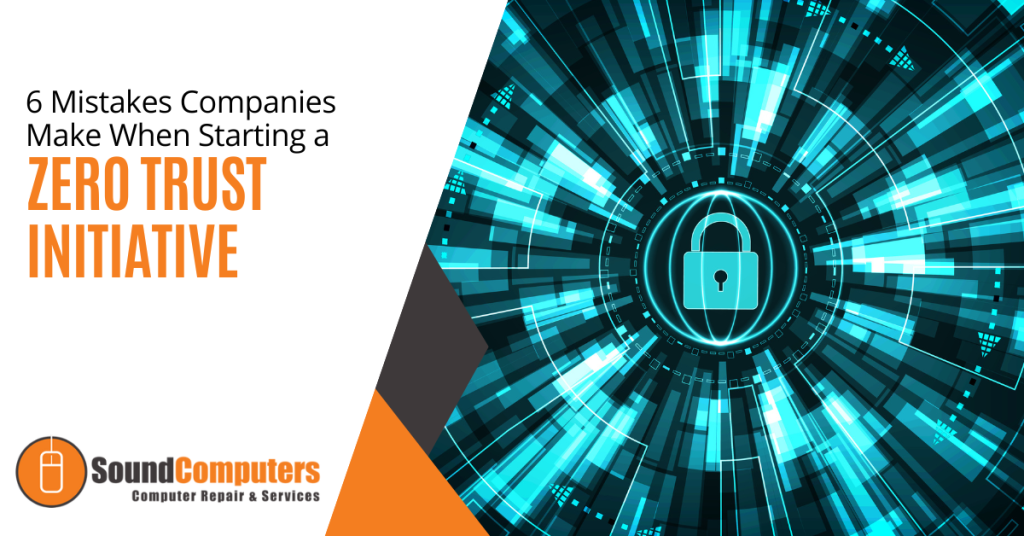
In today’s rapidly evolving cybersecurity landscape, the Zero Trust model has gained immense popularity as a robust security framework. The concept revolves around the principle of “never trust, always verify” and challenges the traditional perimeter-based security approach.
However, despite its effectiveness, many organizations stumble when implementing a Zero Trust initiative. This article explores the common pitfalls companies encounter when starting their journey towards Zero Trust and provides insights on how to avoid them.
Understanding the Zero Trust Paradigm
1. Lack of Clear Understanding
One of the most prevalent mistakes companies make is diving into a Zero Trust initiative without fully grasping its underlying principles. It is not merely a technology or product. It is a holistic security philosophy that requires a fundamental shift in mindset. It emphasizes the importance of continuously verifying trust regardless of the user’s location or network environment.
Without a clear understanding of these concepts, organizations risk misalignment between their security objectives and implementation strategies.
2. Overreliance on Technology
Another common pitfall is the misconception that implementing a suite of security tools equates to achieving Zero Trust. While technology plays a crucial role in enabling Zero Trust principles, it is essential to remember that it is only one piece of the puzzle.
Overinvesting in tools without addressing fundamental security gaps or cultural barriers can lead to inefficiencies and gaps in protection. Companies must focus on integrating technologies seamlessly into their existing infrastructure while prioritizing risk assessment and mitigation strategies.
Building a Strong Foundation
3. Neglecting Identity and Access Management (IAM)
Identity and Access Management (IAM) lies at the heart of the Zero Trust model. However, many organizations overlook its importance. Effective IAM ensures that only authorized users and devices can access critical resources regardless of their location.
Neglecting IAM can result in weak authentication protocols, excessive privileges and unauthorized access and undermine the entire framework. Companies must prioritize IAM solutions that offer robust authentication mechanisms, least privilege access and continuous monitoring capabilities.
4. Inadequate Data Protection Measures
Data is a valuable asset that must be safeguarded in any security framework. However, some companies overlook data protection measures and assume that network segmentation and access controls alone suffice.
Without proper encryption, data masking and data loss prevention (DLP) mechanisms in place, sensitive information becomes vulnerable to breaches and exfiltration. Organizations must implement robust data protection strategies tailored to their specific risk profile and regulatory requirements.
Navigating Cultural and Organizational Challenges
5. Resistance to Change
Implementing a Zero Trust initiative requires a cultural shift within an organization. This can encounter resistance from various stakeholders. Employees may resist changes to established workflows or perceive increased security measures as impediments to productivity.
Leadership buy-in and effective communication are crucial to overcoming resistance and fostering a security-centric culture. Companies should invest in comprehensive training programs that emphasize the benefits of Zero Trust and empower employees to embrace security best practices.
6. Siloed Security Operations
A siloed approach to security operations can hinder the effectiveness of a Zero Trust initiative and lead to disjointed visibility and response capabilities. When security teams operate in isolation, they struggle to correlate threat intelligence, identify emerging patterns and respond swiftly to incidents.
Collaborative security platforms that facilitate seamless communication and information sharing are essential for breaking down silos and fostering a unified security posture. Companies must prioritize integration and interoperability when selecting security solutions to ensure a cohesive defense strategy.
Implement Zero Trust Today
Implementing a Zero Trust initiative is a complex undertaking that requires careful planning, collaboration and continuous refinement. By avoiding common mistakes and addressing key challenges head-on, companies can strengthen their security posture and mitigate evolving threats effectively.
At Sound Computers, we understand the importance of adopting a Zero Trust mindset and offer comprehensive solutions to help organizations navigate their security journey successfully. To learn more about how we can support your initiatives, contact us today.
